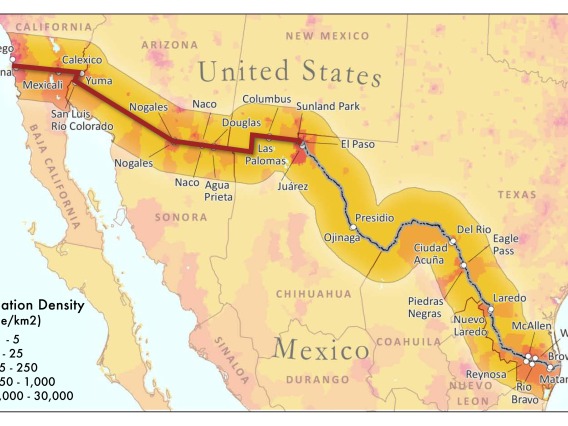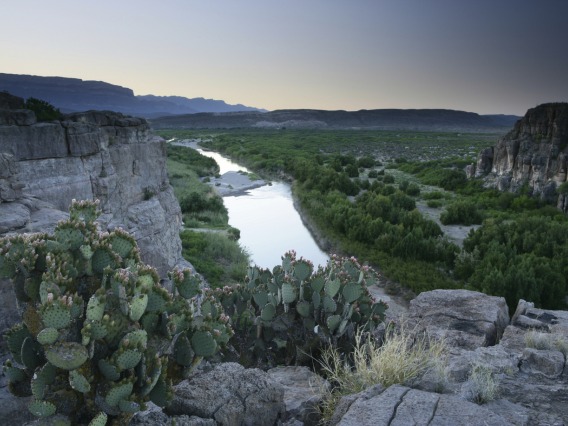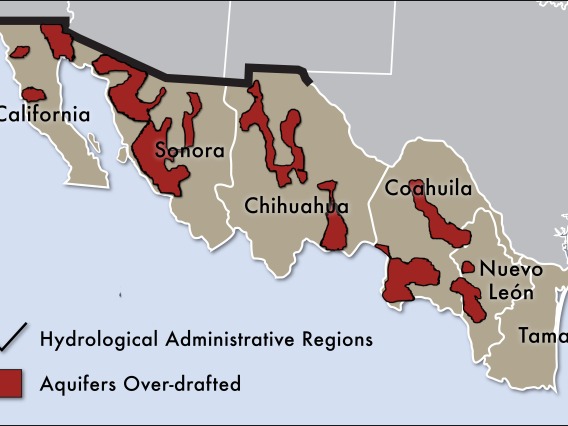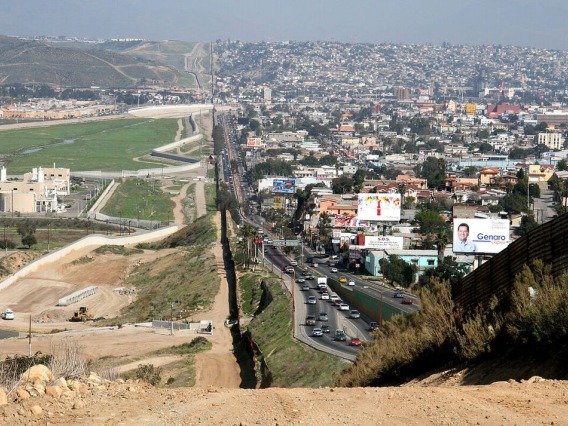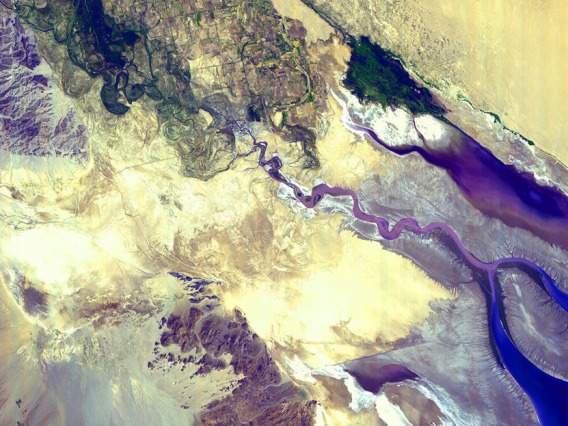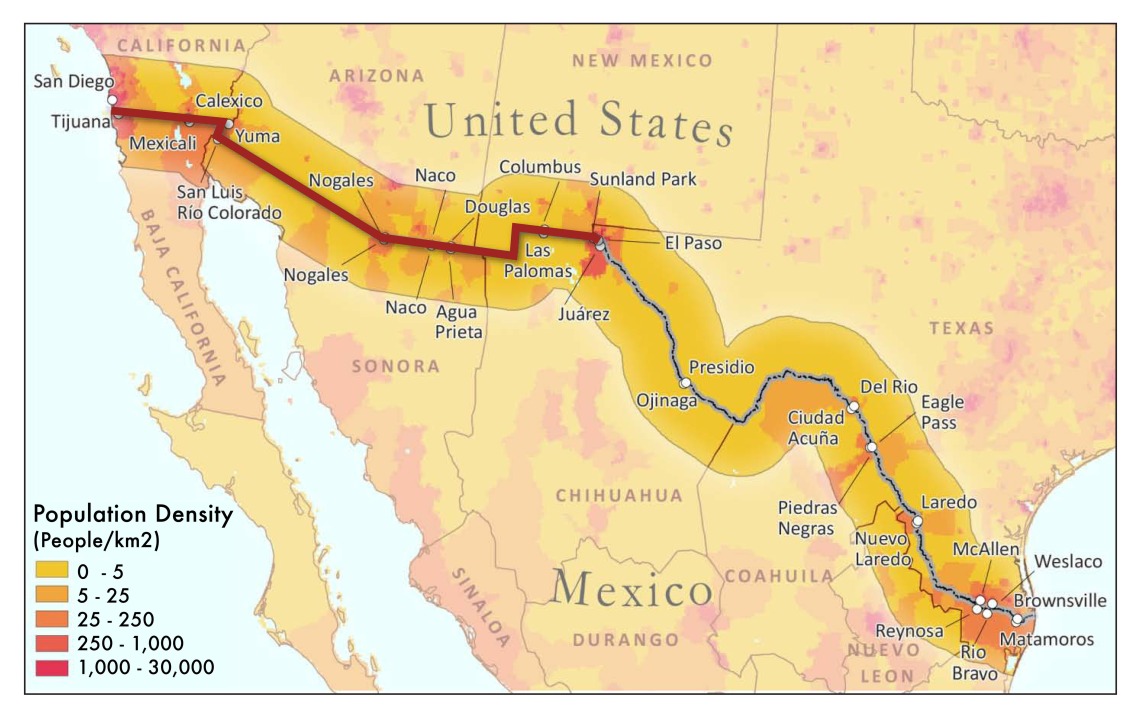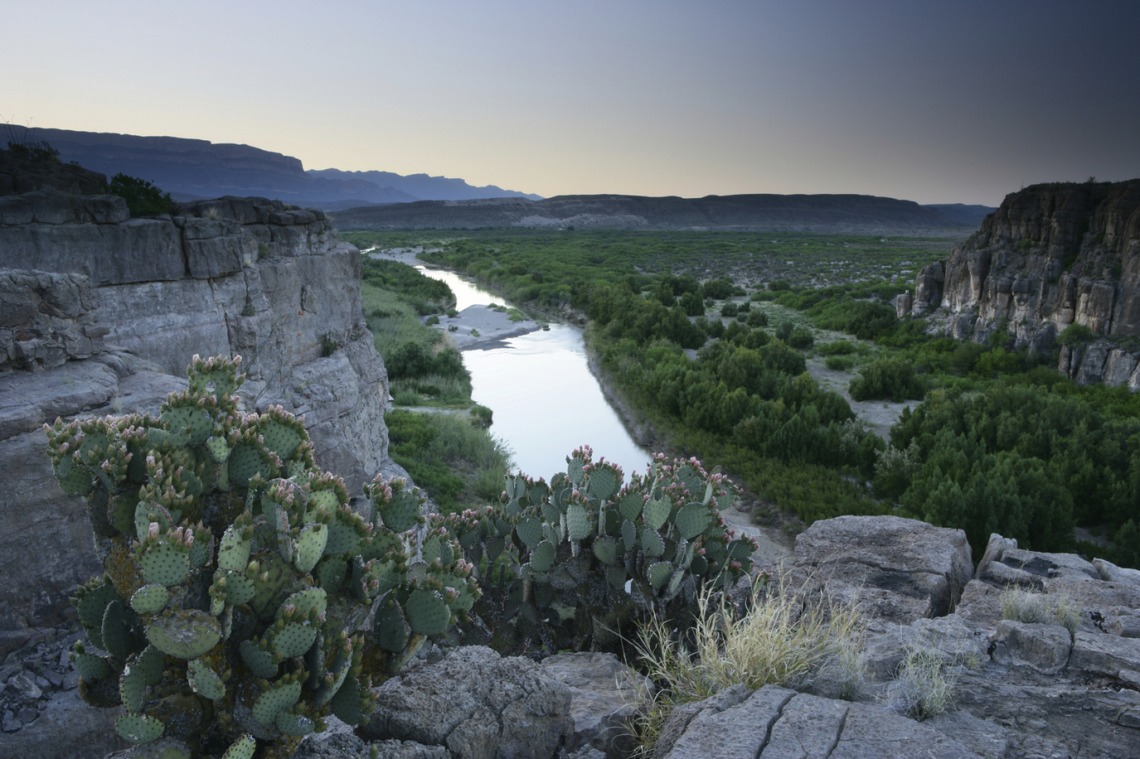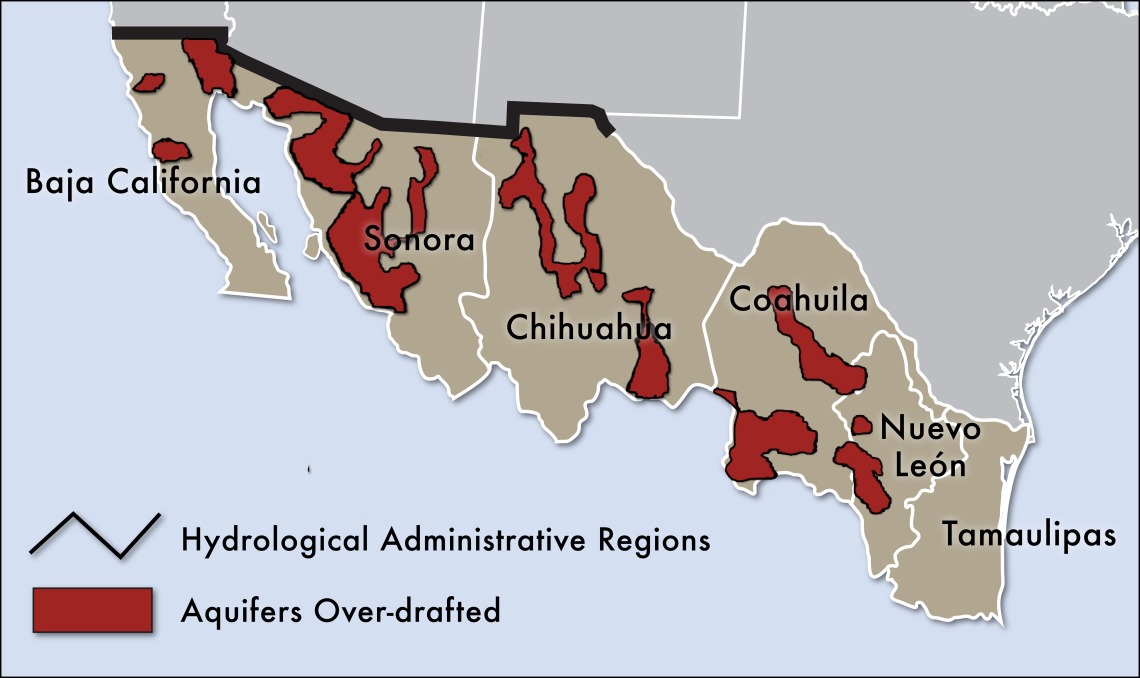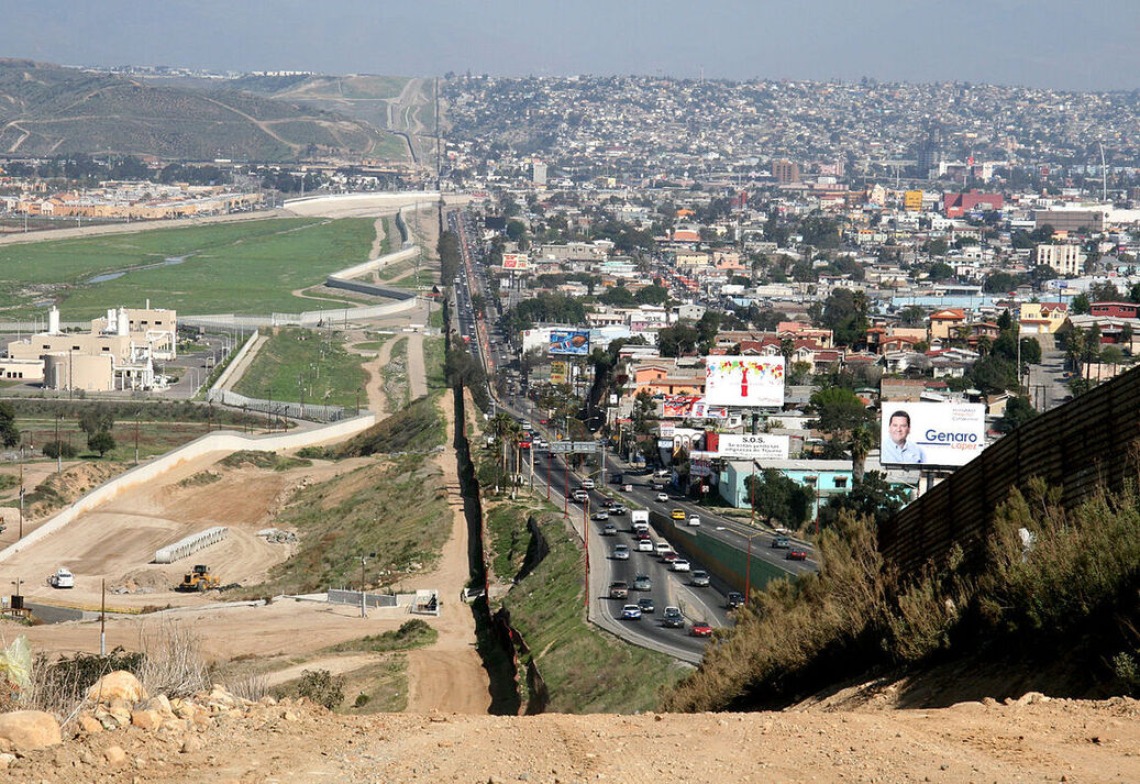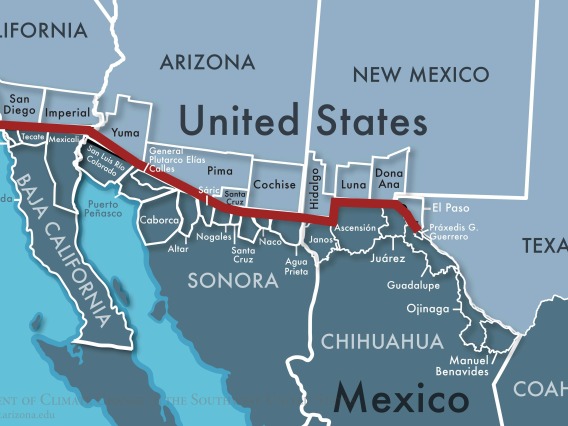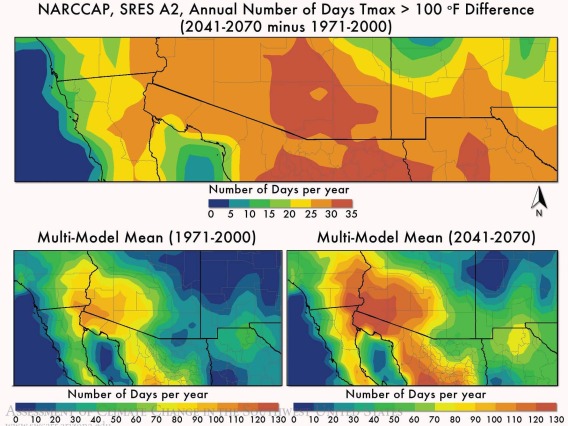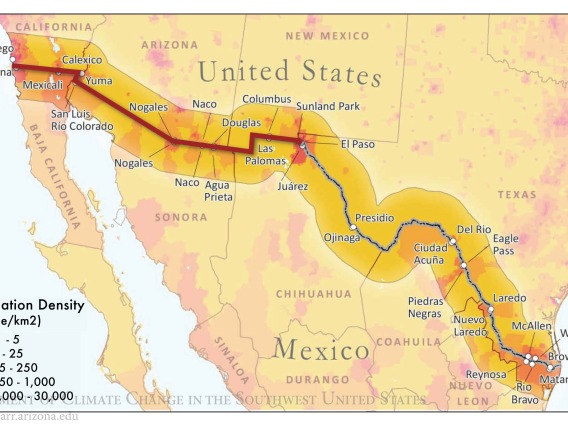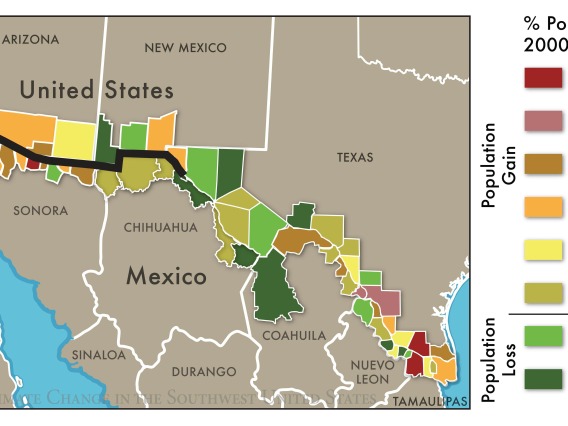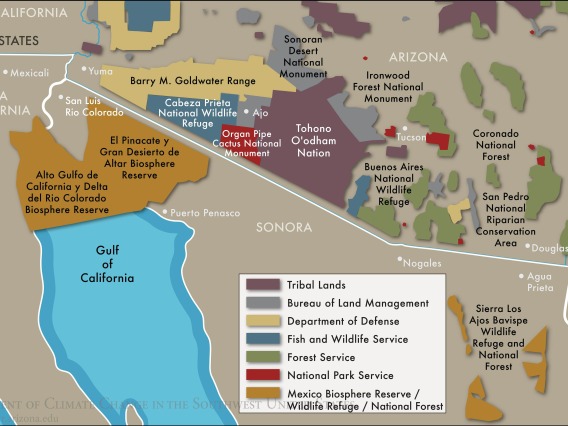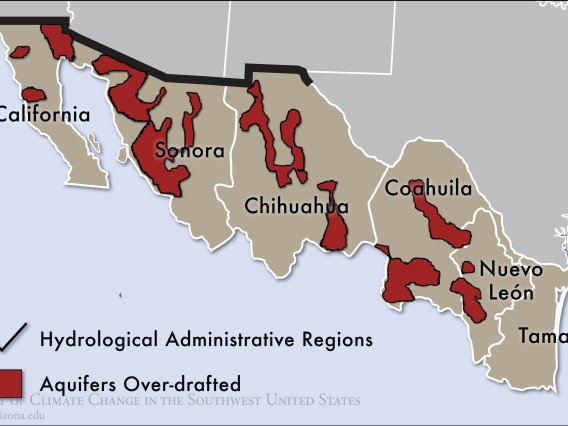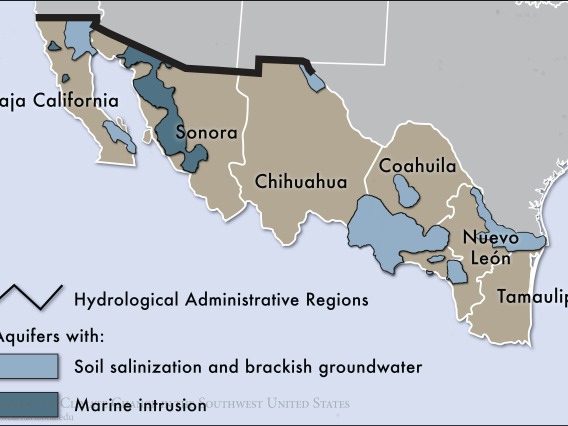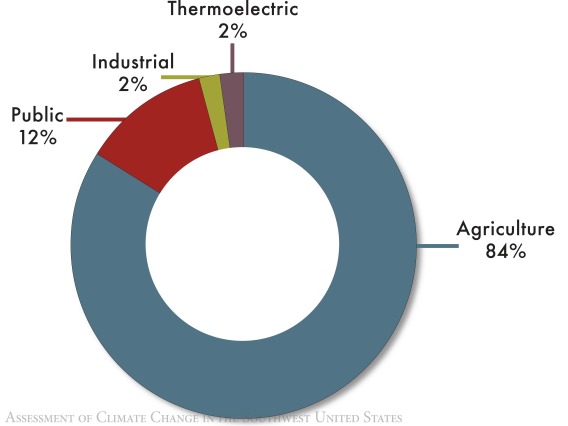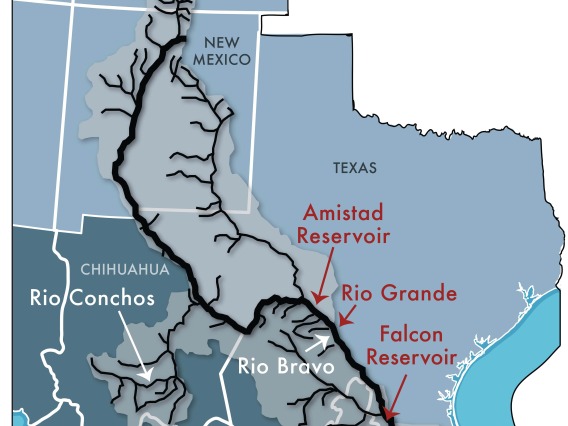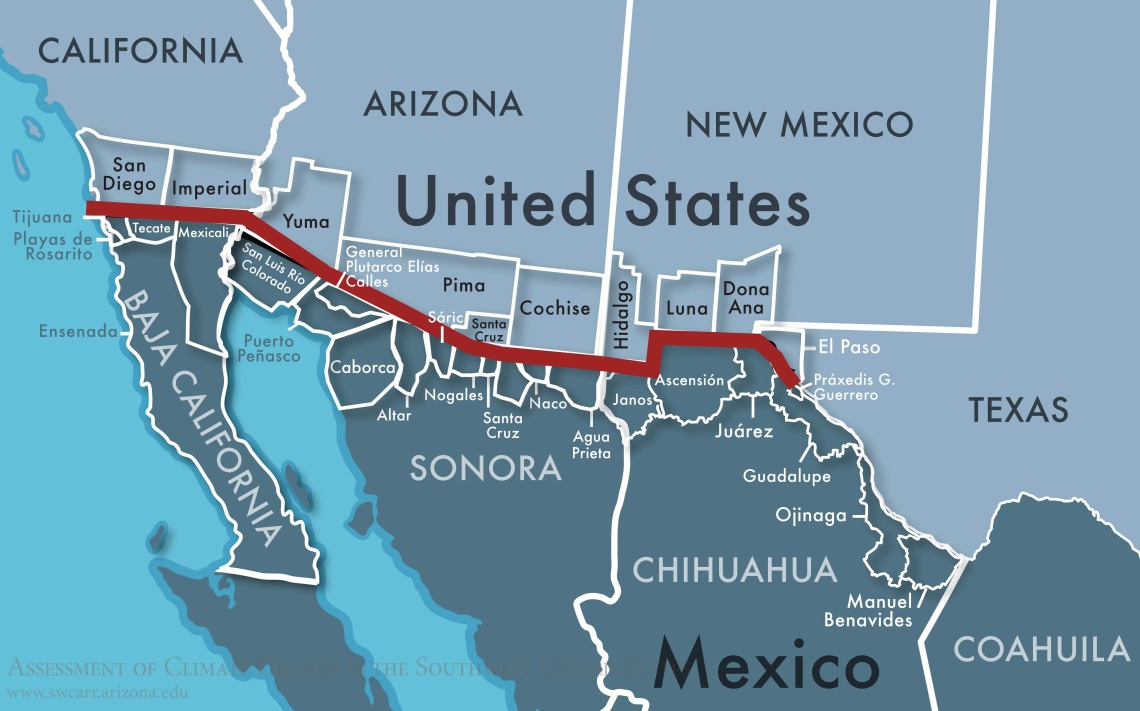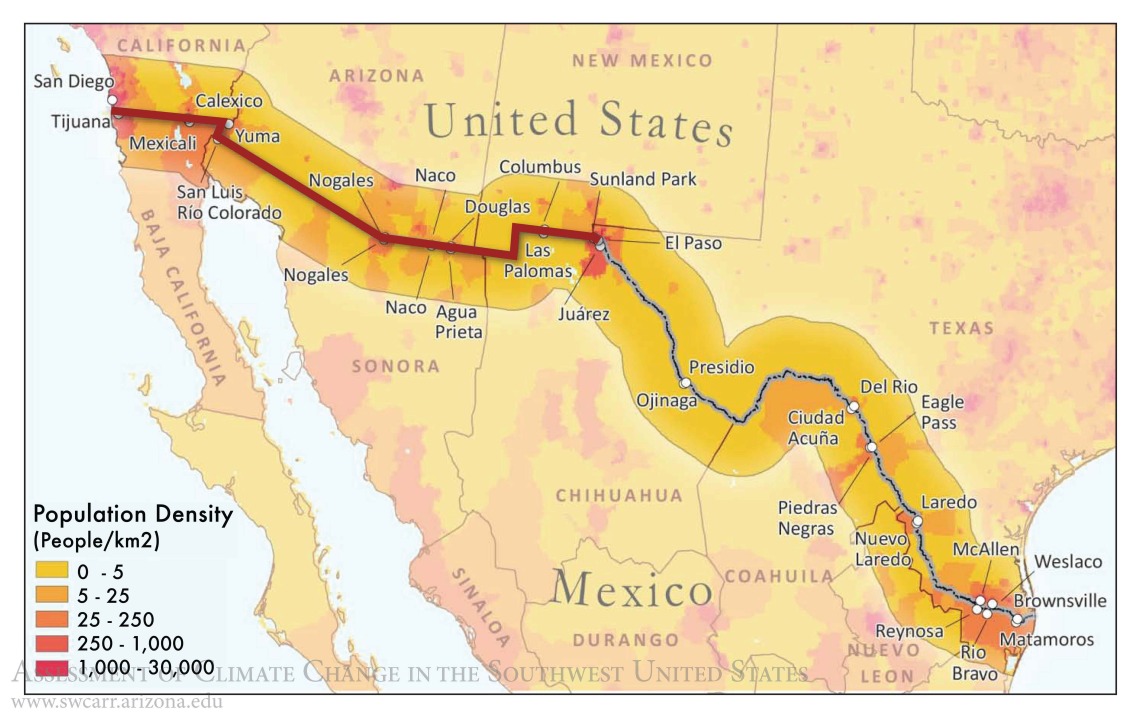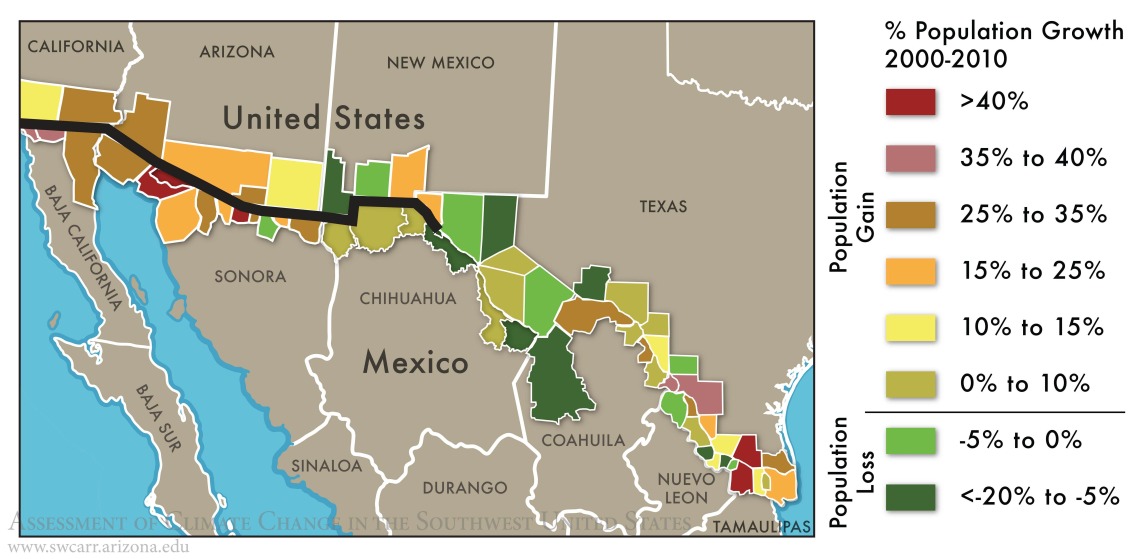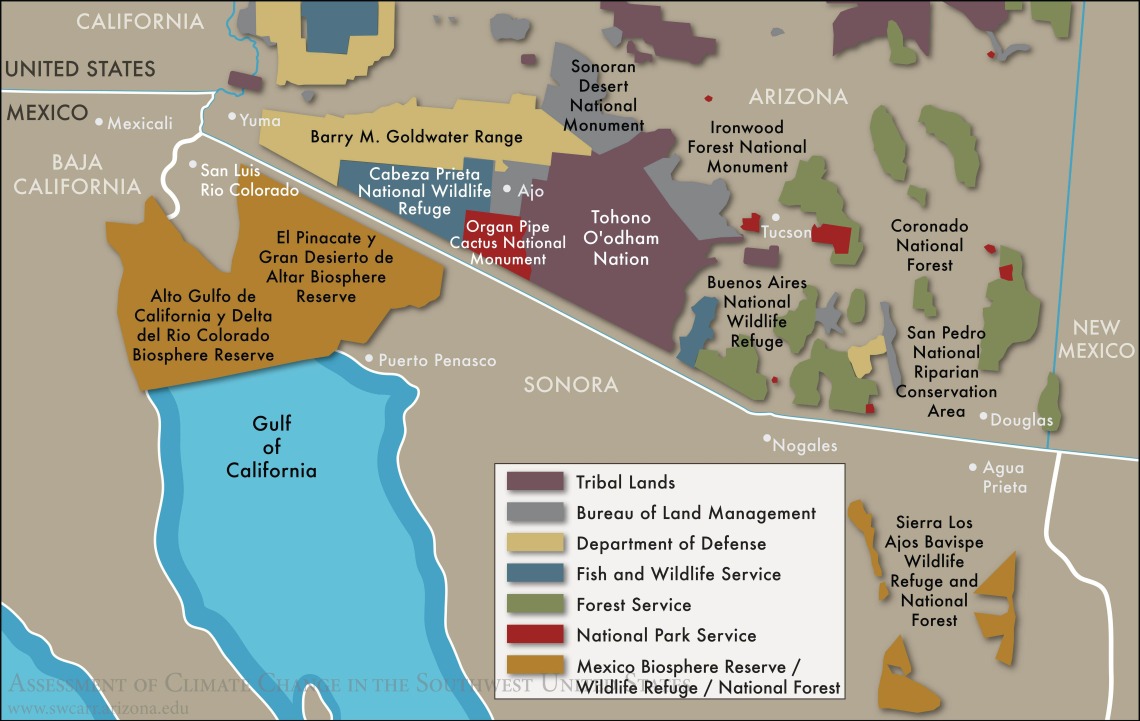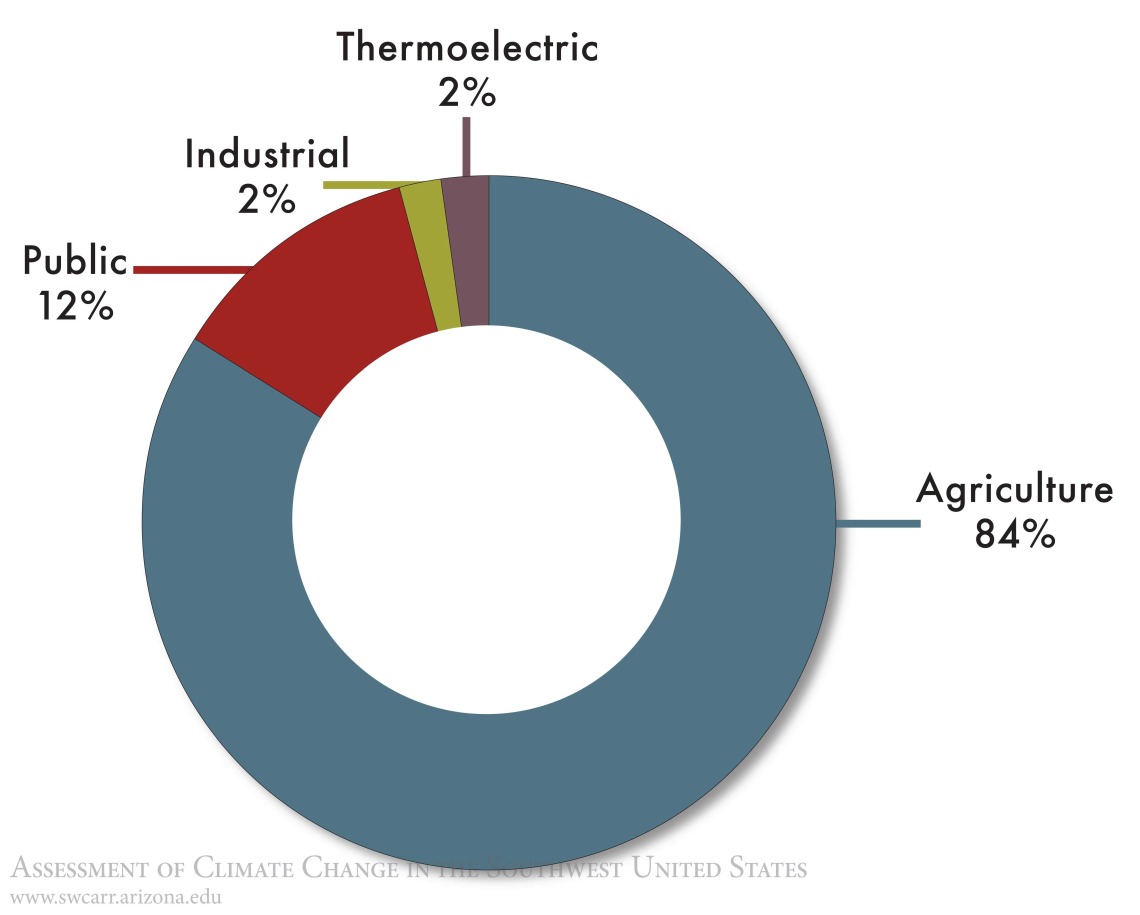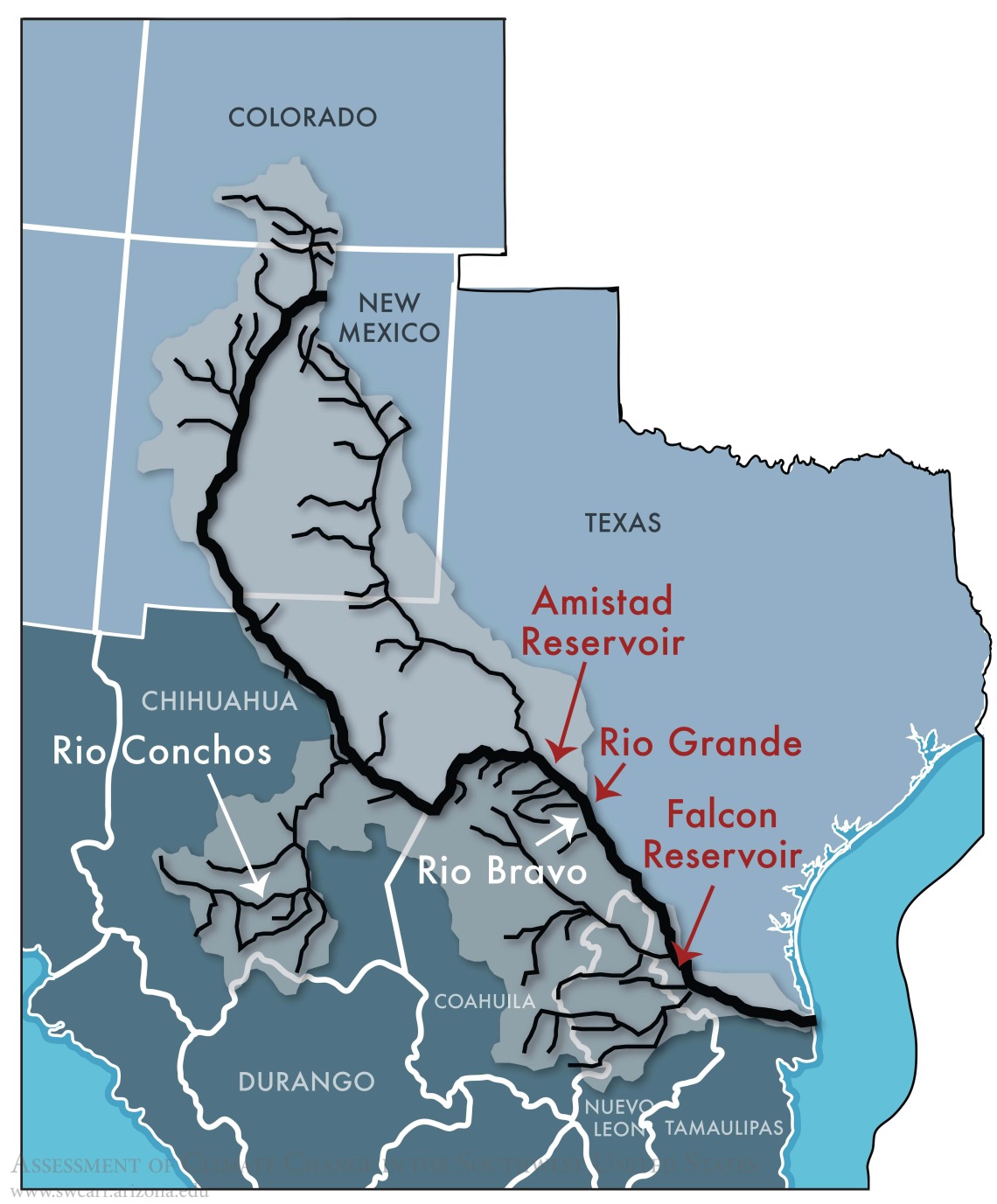Climate Change and U.S.-Mexico Border Communities describes the forces that shape the U.S.-Mexico border region—population changes, urban expansion, economic development, and political processes—and that affect the vulnerability of the region to climate change, discussing how communities and agencies might adapt to offset these impacts, with an emphasis on cross-border collaboration.
Citation:
Wilder, M., G. Garfin, P. Ganster, H. Eakin, P. Romero-Lankao, F. Lara-Valencia, A. A. Cortez-Lara, S. Mumme, C. Neri, and F. Muñoz-Arriola. 2013. “Climate Change and U.S.- Mexico Border Communities.” In Assessment of Climate Change in the Southwest United States: A Report Prepared for the National Climate Assessment, edited by G. Garfin, A. Jardine, R. Merideth, M. Black, and S. LeRoy, 340–384. A report by the Southwest Climate Alliance. Washington, DC: Island Press.
Margaret Wilder (University of Arizona)
Gregg Garfin (University of Arizona)
Paul Ganster (Institute for Regional Studies of the Californias, San Diego State University)
Hallie Eakin (Arizona State University)
Patricia Romero-Lankao (NCAR)
Francisco Lara-Valencia (Arizona State University)
Alfonso A. Cortez-Lara (Colegio de la Frontera Norte)
Stephen Mumme (Colorado State University)
Carolina Neri (National Autonomous University of Mexico)
Francisco Muñoz-Arriola (Scripps Institution of Oceanography)

